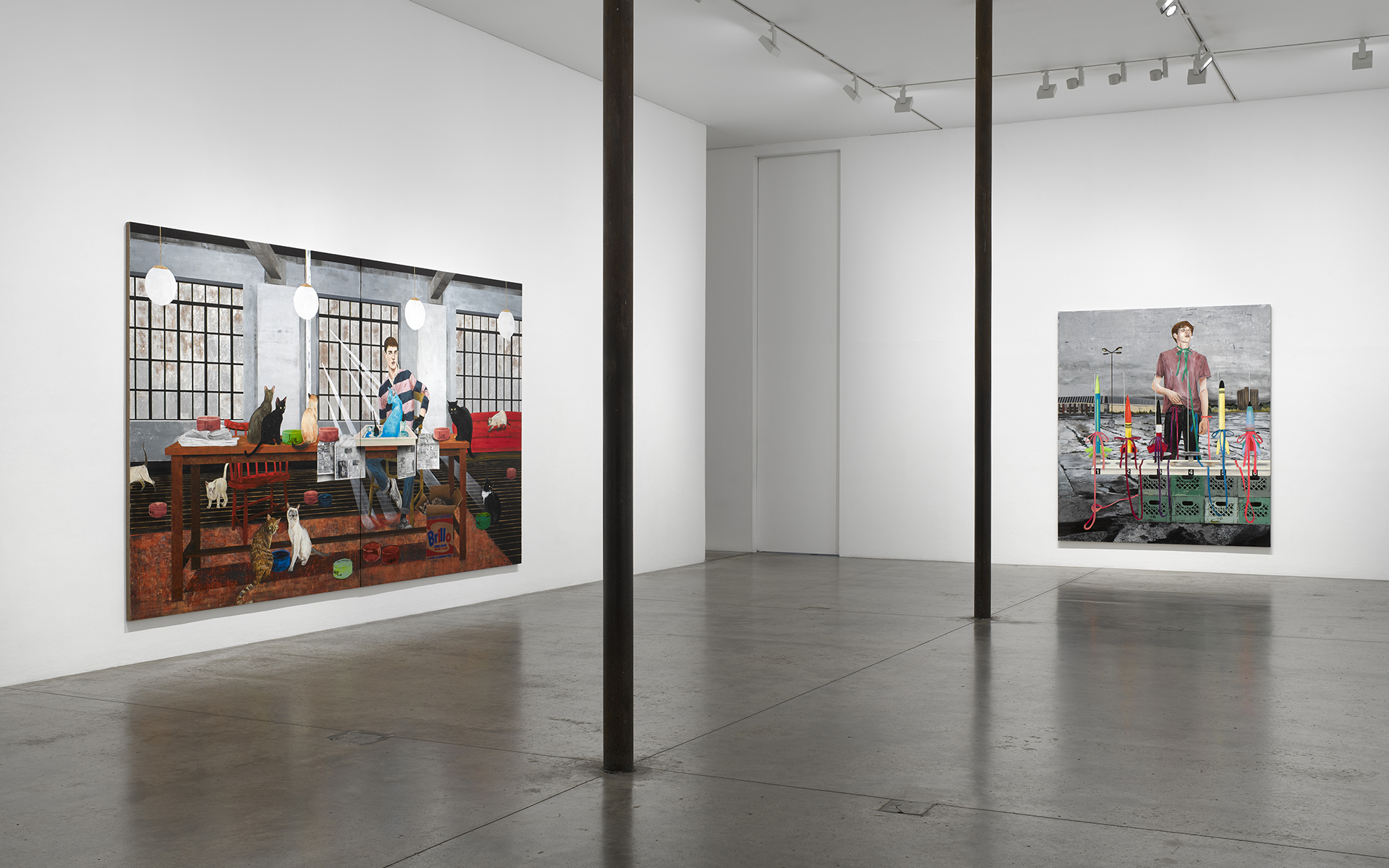2045–The Death of Ray Kurzweil ("The Unmanned" series)
2014 - Film & Video (Film & Video)
26 min
Fabien Giraud & Raphael Siboni
The Unmanned, is composed of several 26min episodes, it is a fictional documentary about the history of humanity faced with technology acceleration. Each episode dramatizes a “singular” encounter between man and machine. Each episode is filmed with a different camera (a preprogrammed machine or a drone). The title The Unmanned – in French, ‘an uninhabited machine’ highlights perfectly the subject and the method used by the artists. The series uses as a starting point Ray Kurzweil (RK), a researcher described as the “the pioneer of Silicon Valley”. Kurzweil popularized the theory of singularity, as a point of “discontinuity” or inevitable rupture where a machine auto-generates itself to overtake man. Fabien Giraud and Raphael Siboni’s series starts with Ray Kurzweil’s death and the beginning of the machine reign. For Ray Kurzweil and many other positivist researchers, the theory of singularity goes along with an important financial and political project. Considerable investments (particularly from Google where RK heads of a laboratory) apply especially to genetics and biotechnology. Kurzweil’s real project lies behind the theory of singularity: immortality through technological rebirth. This research aims at slowing down the process of aging and bringing our parents back to life. Episode 1 is an image of the world in 2045, as seen by Kurzweil. He would then be 97 years old and spend his time with a young child improving his education. This portrait is the accomplishment of Ray Kurzweil’s reasoning project, the moment when he would have brought back his father (Friedrich Kurzweil). Therefore the series starts from the end, 2045, the moment where Ray Kurzweil can finally die because he is replaced by his son who is actually his father. The episode was filmed by a drone in a tropical forest of Mexico.
The collaborative work of Fabien Giraud and Raphael Siboni is part of a reflection on the history of cinema, science, and technology. For them, cinema is a technological invention which fundamentally transforms our relationship to the world. Giraud and Siboni are fascinated by technological acceleration. So much so that they imagine the possibility of a cinema without a human figure; one which does not subject bodies to the frame, nor bend gestures to duration. Each of their films bring radically different temporalities that are foreign to our present. They choose to film in hidden places, like the particle accelerator under the Louvre museum in La Mesure Louvre (2011), or abandoned places like the Greek temple in Bassae-Bassae (2012) where human absence is hollowly felt. Giraud and Siboni are also inspired by popular culture, micro-histories and major political conspiracies.
Colors:
Other related works, blended automatically
» see more

© » KADIST
Fabien Giraud & Raphael Siboni
– In which a storm breaks out in a computing division and its simulation is turned inside out – Fourth episode of The Unmanned series, “The Uncomputable” is the story of a failure: the building in the northern plains of Scotland of a giant climate prediction factory by meteorologist Lewis Fry Richardson...
Related works sharing similar palette
» see more

© » GALERIE MAGAZINE
5 Museum Exhibitions to See in Miami During Art Basel - Galerie Subscribe Art + Culture Interiors Style + Design Emerging Artists Discoveries Artist Guide More Creative Minds Life Imitates Art Real estate Events Video Galerie House of Art and Design Subscribe About Press Advertising Contact Us Follow Galerie Sign up to receive our newsletter Subscribe Installation view of "Hernan Bas: The Conceptualists" at the Bass Museum of Art, Miami Beach...

© » KADIST
Victor & Sergiy Kochetov
1992Ukraine-Russia / Volleyball by Viktor and Sergiy Kochetov features a concrete monument of women volleyball players before the railway station in the village of Vodyanoye, Kharkiv region...
Other works by: » Fabien Giraud & Raphael Siboni
» see more

© » KADIST
Fabien Giraud & Raphael Siboni
– In which a storm breaks out in a computing division and its simulation is turned inside out – Fourth episode of The Unmanned series, “The Uncomputable” is the story of a failure: the building in the northern plains of Scotland of a giant climate prediction factory by meteorologist Lewis Fry Richardson...

© » KADIST
Fabien Giraud & Raphael Siboni
2017– In whiche a lemyng starre returneth in the yeer foretolde and alle thing that spak to us turneth ayeyn to silence – Sixth episode of The Unmanned and sharing the same camera movements as the episode “1997 – The Brute Force”, “Mil troi cens quarante huyt” refers to the appearance of a comet in 1759 – thus validating the computation and rational prediction of its return by the British astronomer and mathematician Edmond Halley...

© » KADIST
Fabien Giraud & Raphael Siboni
2014– In which he changes the rules of the game and all imitations are suddenly interrupted – Third episode of The Unmanned series and replicating the editing structure of “1834 – La Mémoire de Masse”, “The Outlawed” takes place in August 1953 on the island of Corfu, in Greece, at the Club Méditerranée resort where Alan Turing spent his last summer...

© » KADIST
Fabien Giraud & Raphael Siboni
2018– In which an intelligence going back to its place of origin discovers the agony of gods on which it thrives – Seventh and last episode of The Unmanned , “a flood” is set in 1542 as the first conquistadors enter the land later to be known as the Silicon Valley...
Related works found in the same semantic group
» see more

© » KADIST
Juan Covelli
2021El Salto (The Jump/The Waterfall) by Juan Covelli depicts the Salto de Tequendama, a waterfall located on the outskirts of southwest Bogota...





